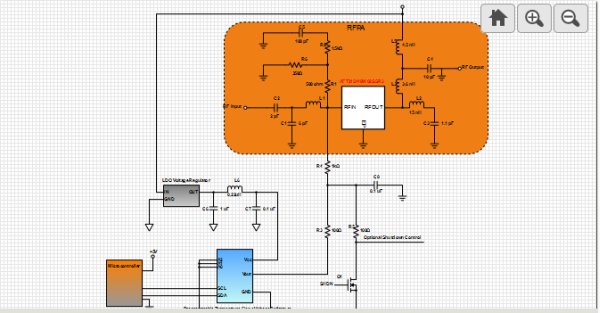Nowadays, laterally diffused metal oxide semiconductor (LDMOS) transistors are widely used for RF Power Amplification and in many applications. A simplified circuit of an LDMOS amplifier bias circuit is shown in the schematic diagram above. The DC Bias on these amplifiers is set by applying a DC voltage to the gate (VGS) and by monitoring the Drain current (IDD). Ideally, this IDD will be constant over temperature, but since the VGS of LDMOS amplifier devices varies with temperature, some type of temperature compensation is required.
The programmable temperature slope voltage reference (PTSVR) features a precision voltage reference combined with a temperature sensor whose output voltage varies linearly with temperature. The precision 1.20V reference has a very low temperature coefficient, and its output voltage is scaled by an internal DAC (VREF) to produce a temperature stable output voltage that is programmable from 0V to 1.20V. The output voltage from the temperature sensor (VTS) is summed with VREF to produce a temperature dependent output voltage. The maximum voltage supply of the PTSVR is 5.5V, and the LDO voltage regulator drops the LDMOS voltage to 5.5V for the PTSVR supply. An LC filter is then added to the output of the voltage regulator to ensure no RF energy present on the supply line. The PTSVR can be tied to a microcontroller or to any I/O connector for PC control and programming.
The RFPA bias control using the PTSVR is very straightforward. The RFPA uses the Freescale AFT21S140W02GSR3. LDMOS are useful devices for many applications including commercial FM broadcasting and TV power transmitters, cellular and paging communication systems, and military RF and microwave hand-held
For more detail: LDMOS Transistor Bias Control in RF Power Amplifiers


